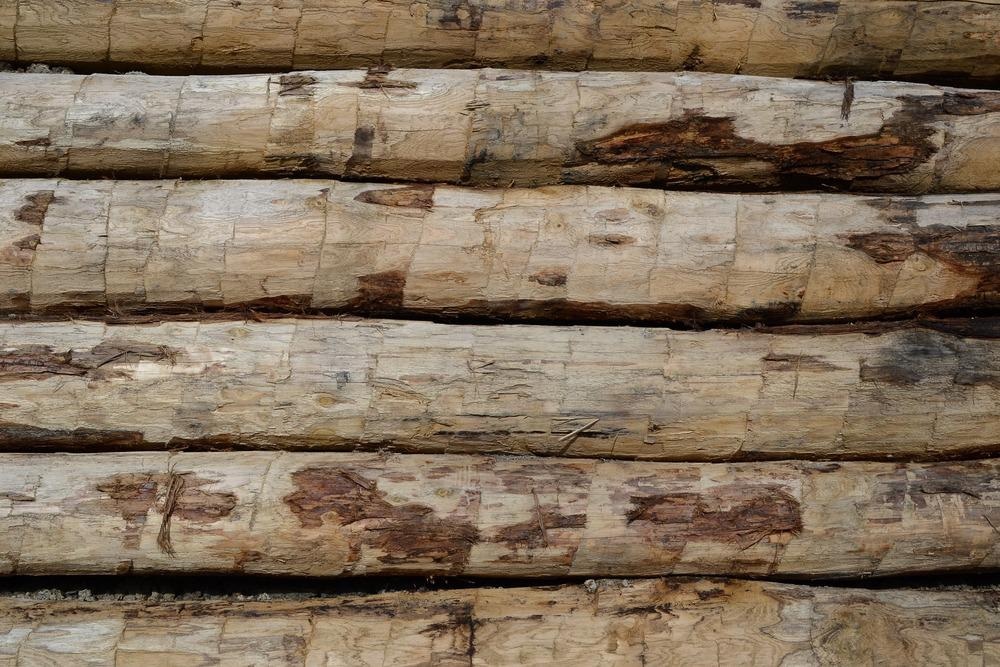
Image Credit: Natalotschka/Shutterstock.com
Understanding how the properties of wood change during the aging process is vital to the conversation of historic buildings, the success of projects constructing buildings with reused wood, and ensuring the performance and durability of wood as a modern construction material. Here we discuss how atomic force microscopy is being used as a much-needed accurate method of analyzing wood aging.
A Lack of Research into the Aging of Wood
Not much is known about the aging process of wood, it is an area that has been neglected by research, partly because of the lack of accurate techniques available to assess the impact of aging on the properties of wood. This lack of knowledge significantly impacts the increasing use of wood as a modern construction material.
Recent decades have seen an elevated demand for sustainable and renewable building materials as the world strives to reduce its impact on the environment across all industries. Therefore, wood is an attractive option for its sustainability. However, it faces a major drawback related to the negative impact of aging on the material. Factors such as alterations to the chemical, physical, and mechanical properties surrounding the wood, exposure to different temperatures, humidity, UV light, chemical treatments, and mechanical stresses to the wood can all irreversibly alter its properties.
Viewing Wood at the Nanoscale
Recent research presents an accurate atomic force microscopy (AFM) method of investigating wood aging. The new protocol assesses the surface changes of the structures most susceptible to aging - the wood pits.
The international team of researchers based at institutions in the United Arab Emirates and Germany recognized that the mechanisms underlying wood aging are not fully understood. They highlighted that because these mechanisms appear to occur simultaneously, current methods have failed to provide clear data on the individual effects. The team believed that gaining an understanding of age-related alterations to the chemical properties of the major polymers that are vital to the structure of wood, such as cellulose, hemi-cellulose, and lignin, would be instrumental to deepening our knowledge of wood aging. The challenge of studying these structures was that they are distributed in different locations of the wood down to the nanoscale.
Conventional methods are limited in that they can only study macroscopic changes to wood. However, AFM provides information with nanoscale resolution and has already proven to be successful in studying the nanostructure of the surface of a range of materials. It is also often used to assess micro-mechanical properties or provide chemical characterization.
To establish an AFM technique more specialized in monitoring wood aging, the team developed a method based on using the measurement of adhesion between wood pits and functionalized AFM tips to indicate evidence of wood aging.
Measuring Adhesion Between AFM Tips and Wood Pits
To measure adhesion in a controlled environment, the team conducted their experiments within an environmental chamber. Here, nitrogen gas was introduced over the sample to control humidity and prevent any level of adhesion due to water molecules latching to the surface of the sample.
The sample of wood was attached to the AFM disc and fixed to the AFM hot stage. It was maintained at a temperature of 30 ◦C. The AFM tip was positioned over the earlywood part of the sample using a camera. Next, a topographic scan was conducted, highlighting anatomies of the wood such as cell walls, cell lumens, pit torus, and pit margo. The researchers measured the adhesion force between the wood sample and the AFM tip based on the obtained pull-off force via force–distance curve.
Conclusion
The team’s work demonstrated a novel AFM-based method of analyzing wood aging. The technique was able to characterize changes to the wood surface by measuring the relative adhesion force between the wood sample and the AFM tips. It was concluded that the structures most suitable for monitoring aging at early stages were the wood pits. Standard tips were not sensitive enough to pick up on signs of minor aging, for this, it was necessary to use O–H modified tips.
Overall, the researchers were able to prove that wood aging can be monitored by measuring the adhesion between wood pits and functionalized AFM tips. The newly developed method will likely be invaluable to the construction industry, as well as heritage and conservation projects. Previously, no established method of wood aging analysis had been available, which presented a challenge to those building with and restoring wooden structures. With the advent of this new method, scientists have a way to gain a deeper understanding of how time impacts the various properties of wood, and how it changes it as a structural component.
References and Further Reading
Kránitz, K., Sonderegger, W., Bues, C. and Niemz, P., 2015. Effects of aging on wood: a literature review. Wood Science and Technology, 50(1), pp.7-22. https://link.springer.com/article/10.1007/s00226-015-0766-0
Mao, J., Abushammala, H. and Kasal, B., 2021. Monitoring the surface aging of wood through its pits using atomic force microscopy with functionalized tips. Colloids and Surfaces A: Physicochemical and Engineering Aspects, 609, p.125871. https://www.sciencedirect.com/science/article/pii/S0927775720314643
Matsuo, M., Yokoyama, M., Umemura, K., Sugiyama, J., Kawai, S., Gril, J., Kubodera, S., Mitsutani, T., Ozaki, H., Sakamoto, M. and Imamura, M., 2011. Aging of wood: Analysis of color changes during natural aging and heat treatment. Holzforschung, 65(3). https://hal.archives-ouvertes.fr/hal-00702706/document
Disclaimer: The views expressed here are those of the author expressed in their private capacity and do not necessarily represent the views of AZoM.com Limited T/A AZoNetwork the owner and operator of this website. This disclaimer forms part of the Terms and conditions of use of this website.